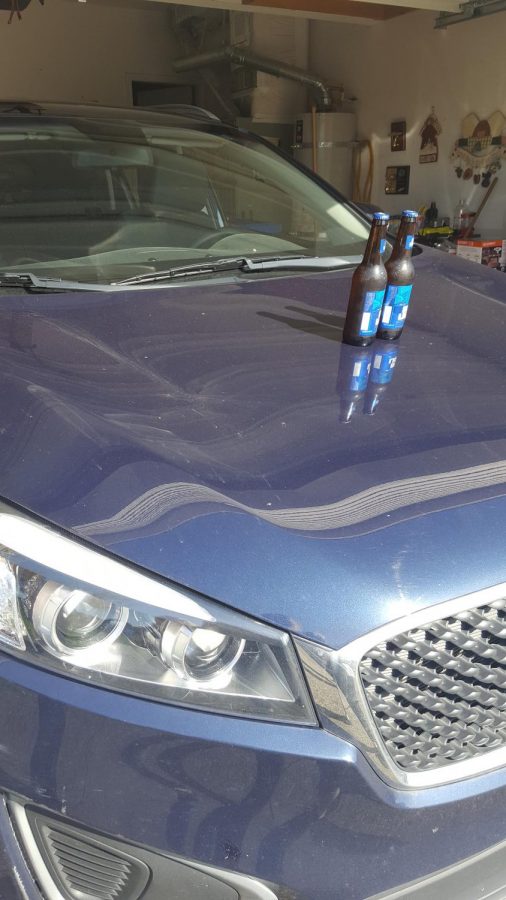Drinking and Driving Impacts
Why do people get behind the wheel even though they’re impaired?
“I’ve only had a few drinks, I’ll be fine,” says the unsuspecting drunk individual, not realizing how incredibly dangerous it actually is to get behind the wheel when you can’t even fully control your muscle coordination or judgement. Officer Matt Huspeck, a traffic officer with the Portland P.D., says, “I think it’s a huge problem… people just don’t understand it” or “people get away with it too much.” Driving with a blood alcohol concentration (BAC) of .08% or higher is illegal, due to its dangerous, potentially fatal consequences. In 2016, drunk driving crashes killed 10,497 people, accounting for 28% of all traffic-related deaths, according to the CDC. In 2017, 1 person died every 48 minutes in the U.S. due to drunk driving related incidents, as reported by the NHTSA.
Alcohol can affect people differently, depending on weight, sex, and amount of food consumed. But the symptoms are generally similar: according to the CDC, at around .08% BAC, typical effects are poor muscle coordination, difficulty to detect danger, and impaired judgement, self-control, reasoning, and memory. Predictable effects on driving include concentration, short-term memory loss, speed control, reduced information processing capability, and impaired perception.
Why do people get behind the wheel even though they’re impaired? In Officer Huspeck’s experience, drunk people may not even realize that they’re drunk. He teaches a high risk driving course at a hospital, where volunteers come in to get “dosed” on alcohol and tested throughout the day, to educate them about the dangers of impairment. “They do a breath test about halfway through… Most people halfway through the day when they’re getting dosed, you ask them ‘Would you drive right now?’ And they tell you, ‘No, I’m hammered. I’m way too drunk. There’s no way I could drive a car.’ And they blow on the breathalyzer. And it’s like an oh four [.04% BAC]. So like half the legal limit. And they feel like they’re drunk. We keep giving them alcohol. And we ask them again, before they take the second breath test, ‘How do you feel? Would you drive?’ And most of them say yes, they are not drunk at all, that we did not give them enough alcohol. And then they blow the point oh eight [.08% BAC], 1 point oh [1.0% BAC]. And it’s a real big eye opener for people, because a lot of them have probably driven after they’ve had that much to drink and didn’t think they were drunk.”
If a drunk driver is allowed onto the roads, there can be devastating consequences. Not only could the driver damage their car or themselves, they could also harm another person, even the whole community. The driver may have the best of intentions, but they’re still impaired. The consequences could range anywhere from a $10,000 DUI, to a wrecked car, to a dead passenger or pedestrian. Not only do the victim and their family suffer, so do the driver and their family. The driver has to live with what they’ve done, that their decisions resulted in the loss of life. No one should ever feel pain of this magnitude, driver or victim, especially from such a preventable disaster.
Prevention is the best way to cull this epidemic. Law enforcement has already put several preventative plans in place. One example is the ignition interlock device, according to the NHTSA. Some states require offenders to install it into their car. The device is a breath tester, connected to the vehicle’s ignition. The driver must blow into it and pass the test in order to start the car. The limit is usually set below .08% BAC. Another preventative strategy is saturation patrols, where law enforcement get people to “somehow feel like there’s cops everywhere,” says Officer Huspeck. Certain areas are targeted, so the drivers who visit that area associate it with high police activity, and are likely to think twice before getting behind the wheel.
But most of all, education is key. Though there are some educational measures in place to make sure people are aware of the dangers of drunk driving, it’s still not enough. The combination of media attention and traditional education is essential to raising awareness. Officer Huspeck affirms this, mentioning organizations such as Mothers Against Drunk Drivers (MAD). MAD “used to be a big push many, many years ago. And they’re now starting to come back. And their big thing is definitely getting people educated. And getting the word out there and getting media publicity, to try and get people to think twice and to make that change.”
It’s essential to make sure people are aware of the implications of drunk driving. Monitoring alcohol intake and having a backup plan could help. Ask a friend to be the designated driver, or call an Uber or Lyft. Do anything you can to avoid getting behind the wheel while under the influence. Because law enforcement like Officer Huspeck “can’t be everywhere. [They] can’t stop every car. [They] have to really rely on people to take the responsibility.”

